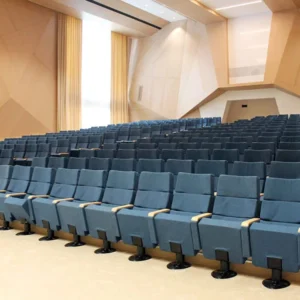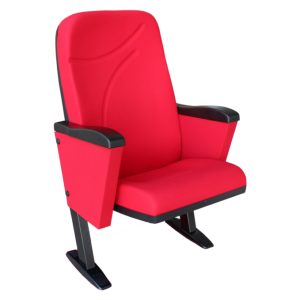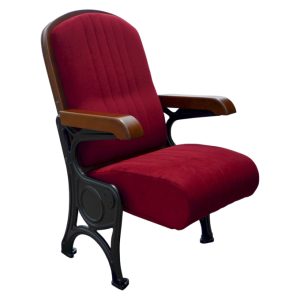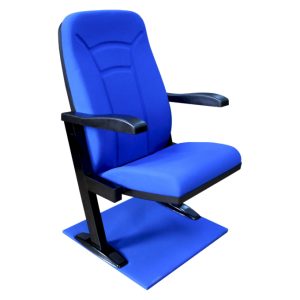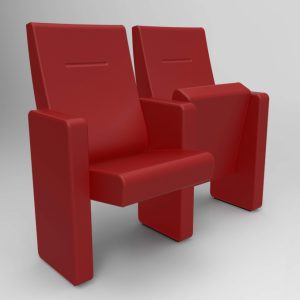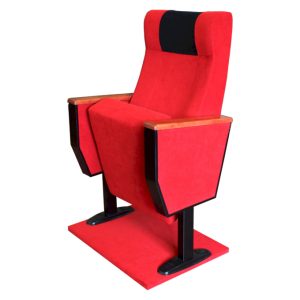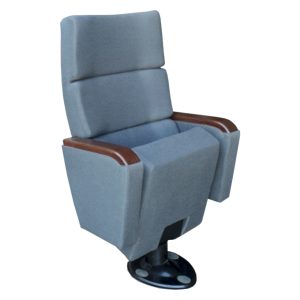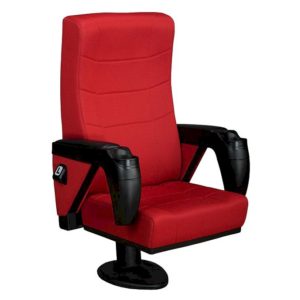When you walk into a conference hall, the very first detail that sets the tone of the space is often the seating. The types of conference chairs chosen can directly influence not only the comfort of participants but also the perception of the entire event. For professionals who are responsible for equipping auditoriums, seminar halls, or boardrooms, chair selection is not a casual decision—it’s a strategic one. And here’s the question many decision-makers quietly ask: Are all conference chairs created equal? Absolutely not. Let’s explore why.
Table of Contents
Types of Conference Chairs?
The term types of conference chairs might sound broad, but in reality, it’s a nuanced subject shaped by usage needs, spatial planning, durability expectations, and even acoustic performance. While some models are designed to blend seamlessly into grand auditoriums, others are meant for smaller, more flexible spaces. The decision goes far beyond aesthetics—it touches efficiency, practicality, and lifecycle value.
Why do conference chairs matter for long-term investment?
The simple answer: because seating influences participation. Poorly designed or unsuitable chairs have historically led to disengaged audiences and even shortened event durations. On the other hand, a well-chosen seating system supports concentration, interaction, and a professional atmosphere that reflects on the host organization.
Conference Seating Varieties
Conference seating varieties cover a wide spectrum—from fixed seating systems with writing tablets to mobile solutions that support multipurpose use. One recurring question is: Do modular seating systems really provide enough flexibility? In practice, they do. Movable chairs with linking mechanisms or stackable frames allow venues to transform overnight from a corporate seminar setup into a cultural event hall.
Key elements of seating varieties
- Fixed vs. Movable: Fixed systems are often preferred in large-scale auditoriums, while movable chairs serve dynamic, smaller spaces.
- Integration features: Modern systems integrate power modules, USB charging, or even acoustic dampening to support today’s digital-first meetings.
Conference Hall Chair Types
The subject of conference hall chair types often surfaces in tender specifications and project proposals. Whether it’s for a newly built hall or a renovation, decision-makers look at durability and compliance with international standards.
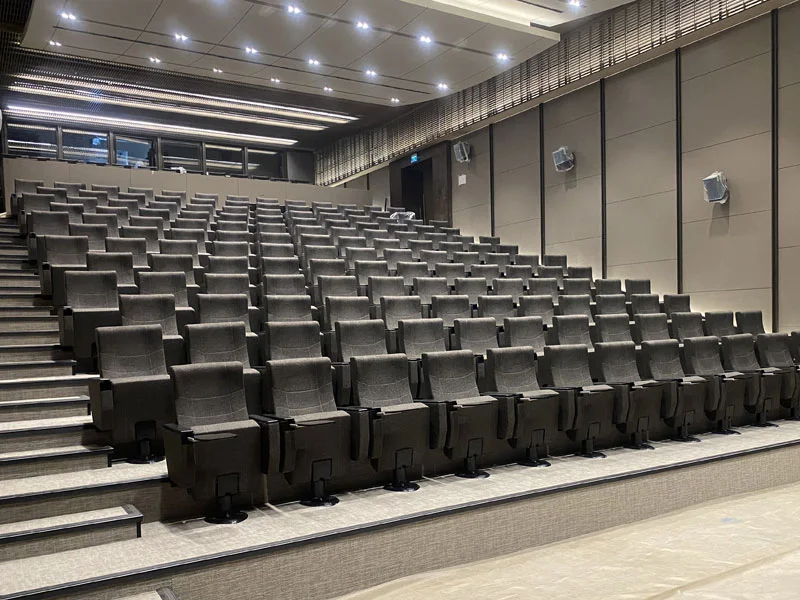
Subcategories worth exploring
- Ergonomic conference chairs: Especially demanded by corporate clients, these chairs reduce fatigue in day-long sessions.
- Executive conference hall chairs: Heavier, more imposing models designed for VIP areas, council chambers, or boardrooms.
- Mesh back conference chairs: Increasingly popular for their breathability and lighter structure, especially in warmer climates.
Conference Hall Seating Styles
Talking about conference hall seating styles, one cannot overlook how layout impacts both audience engagement and acoustics. Should you go for straight-line seating, curved rows, or a horseshoe design? Each arrangement tells a different story.
Examples of popular styles
- Curved seating rows: Enhance visibility and promote inclusivity in discussions.
- Amphitheater style: Optimizes sightlines and works well in lecture-heavy environments.
- Flat floor multipurpose setups: Designed for spaces where reconfiguration is a regular requirement.
Seminar Chair Kinds
When it comes to seminar chair kinds, functionality is usually at the forefront. Professionals often ask: How do seminar chairs differ from typical conference seating? The distinction lies in portability and adaptability.
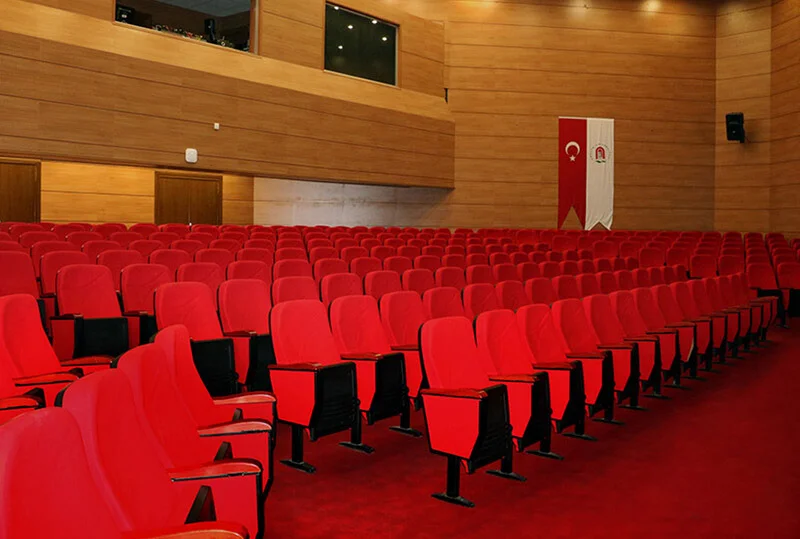
Breakdown of seminar seating
- Folding conference room chairs: Practical for temporary setups or venues where storage is limited.
- Seminar chair options with writing tablets: Essential for training sessions or note-heavy workshops.
- Upholstered conference seating: Adds a level of comfort when events stretch over multiple hours.
Conference Chair Options
Diving deeper into conference chair options, the decision matrix often includes lifecycle costs, maintenance expectations, and adaptability. For instance, upholstered models demand a maintenance plan, while mesh-backed alternatives reduce cleaning needs.
How do professionals make their final choice?
By combining usage scenarios with lifecycle evaluations. Procurement managers and architects often weigh upfront investment against durability and service support offered by manufacturers. In international projects, compliance with EN and BIFMA standards is frequently the deciding factor.
Adding Value with Conference Seat Styles
While exploring conference seat styles, one might wonder: Do design and build quality really influence user engagement? The answer lies in the subtle but measurable outcomes—audiences staying alert longer, reduced mid-session fatigue, and enhanced venue reputation. For venues competing for high-profile events, the right chair styles can be a hidden competitive edge.
Practical Considerations for Professionals
For architects and procurement managers, technical specifications matter just as much as visual appeal. Details like seat width (usually between 48–52 cm / 19–20.5 inches), fire-retardant materials, and load capacity standards shape decision-making. In projects where thousands of seats are installed, even a 1 cm variance in dimensions can completely alter the seating capacity of a hall.
And here’s a critical question: Can the wrong seating choice increase operational costs? Yes, it already has in many past projects where frequent repairs, non-compliance penalties, or even replacement had to be factored in just a few years after installation.
Looking Ahead
As the world shifts toward hybrid conferences and multipurpose event spaces, the demand for adaptable, tech-integrated, and durable chairs is growing. Procurement teams are no longer just buying seats—they’re investing in audience experience. When we revisit the original question, What are the types of conference chairs? the answer expands far beyond categories; it becomes a discussion about value, adaptability, and long-term vision.
